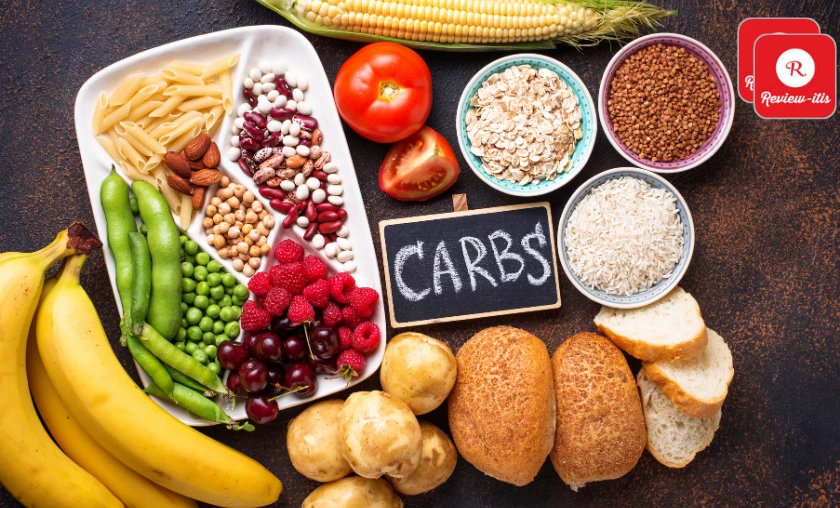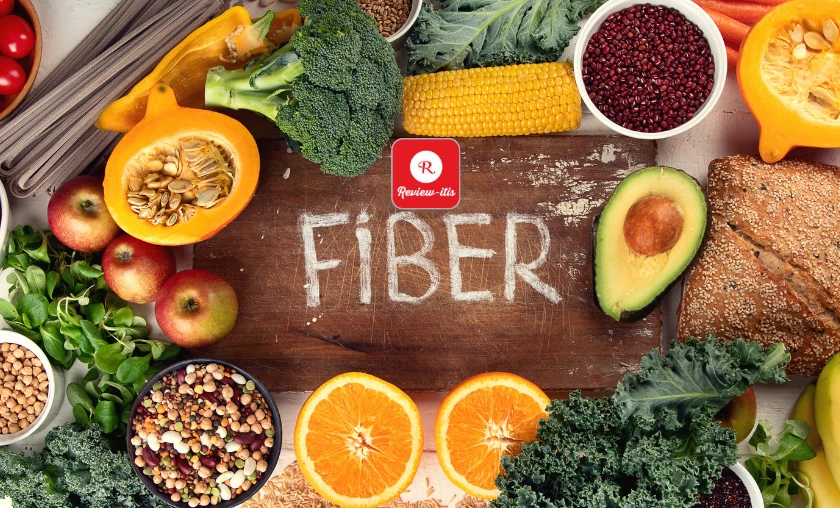What is Wrong with Grains?. We’ve been munching on these bad boys for a solid 10,000 years since the Agricultural Revolution kicked off. They’re a huge part of North American culture and many other places around the world. Would you believe it? Even the USDA recommends loading up on several servings of grains daily for the sake of our health. But here’s the kicker, what’s the deal with grains?
Well, here’s the glaring issue: our bodies just aren’t cut out for them. For hundreds of thousands, maybe even more, years, our ancestors were all about hunting and gathering. No wheat fields, rice paddies, barley farms, or oats plantations for them. Nope, they were all about plucking wild berries, other fruits and veggies, and feasting on the meat they caught and conquered.
And here’s the real shocker: no mammals, including us humans, are meant to devour grains. When we do, our bodies can go haywire, causing celiac disease, gluten intolerances, autoimmune diseases, and a whole bunch of other unpleasantness.
Table of Contents
Vitamin & Mineral Deficiencies of Grains

Let’s talk about the magnificent Vitamin B12 and a bunch of other micronutrients exclusively found in animal products. If a culture relies mainly on grains for its sustenance, they’re bound to suffer from B12 deficiency and a shortage of other essential nutrients. Here’s the deal: we humans didn’t evolve to be primarily plant eaters.
Anti-Nutrients in Grains

Here’s something fascinating: certain critters have evolved to handle these tricky substances called anti-nutrients way better than we humans. Birds, some insects, and even rodents bless their little hearts, have their physiological systems finely tuned to cope with these challenges. But alas, we humans, we didn’t get that memo. Our bodies aren’t equipped to deal with these anti-nutrients.
Phytic Acid:

Let’s talk about phytic acid, also known as phytate. It’s a sneaky little compound that hangs out in the bran and outer coating of all seeds, including grains and nuts. Here’s the catch: phytic acid loves to bind itself to minerals like calcium, copper, iron, magnesium, and zinc in your body, making them less available for proper absorption.
Now, here’s where it gets interesting. Cultures that consume hefty amounts of grains tend to have lower concentrations of minerals in their bones and are more prone to experiencing various types of health issues related to these deficiencies.
Lectins:

Let’s talk about these sneaky little proteins called lectins that plants produce. Their main job? Protecting the plants from pesky insects and bird predators. Here’s the kicker: lectins are considered anti-nutrients, and they have a mischievous way of wreaking havoc on the digestive systems of the animals or insects that dare to feast on the plant. Brace yourself because lectins can really stir things up.
They have the power to mess with your gut flora, throw off your digestive and absorptive activities, mess with leptin (a hormone) and cause resistance, and even give your small intestine and immune system a hard time. They’re notorious for causing leaky gut syndrome, which, in turn, can pave the way for all sorts of autoimmune issues.
Gluten:

Let’s talk about the infamous troublemaker known as gluten. Brace yourself because this protein is even worse than the mischievous lectin and phytic acid duo. Gluten is lurking in barley, rye, and wheat, just waiting to wreak havoc. It’s got a nasty trick up its sleeve: it can wreak havoc on the microvilli in your small intestine, leading to none other than the dreaded leaky gut syndrome. And as we mentioned earlier, a leaky gut can open the floodgates to a whole host of digestive issues, allergies, and autoimmune diseases.
Here’s a little eye-opener for you: about 2% of Americans are grappling with a condition called Celiac disease, where gluten becomes their ultimate arch-nemesis. But hold onto your hats because there’s more to the story. Another 29% of seemingly asymptomatic folks test positive for anti-gliadin IgA in their blood, indicating some gluten-related sensitivity.
And let’s not forget the large chunk of the population that falls under the umbrella of gluten intolerance. These folks can experience a range of unpleasant symptoms, including headaches, joint pain, skin problems, seizure disorders, mental disorders, and a bunch of other not-so-fun companions.
Essential Fatty Acids Deficiencies of Grains:

Brace yourself for some good news! A diet that includes healthy amounts of omega-3 can work wonders in alleviating symptoms of autoimmune diseases, reducing tendencies towards thrombosis (that’s blood clotting, by the way), and calming down inflammation. So, where can you find these magical omega-3s? They’re abundant in meat and oily fish, so keep those in mind for a healthy dose.
Now, let’s talk about grains. They have a different story to tell. Regarding fats in general, and especially omega-3s, grains tend to be on the low side. To make matters worse, they often pack a higher punch of omega-6 fatty acids, which creates an unfortunate imbalance in our diet. So, it’s all about finding that right balance, and when it comes to omega-3s, grains might not be your best bet.
Carbohydrates:

Let’s talk about the repercussions of ramping up our grain consumption. Brace yourself because the consequences can be quite severe. We’re talking about a direct path toward obesity, chronic diseases, and even infertility. So, what’s causing all this trouble?
Well, one of the major culprits is the lifestyle of those who consume excessive amounts of grains. You see, grains bring along a hefty load of carbohydrates, and for the average sedentary individual, it can be way too much to handle. Here’s the deal: any carbohydrate that we consume but don’t burn off as energy ends up being stored as fat. Yikes!
But wait, there’s more. A high-carb, high-grain diet sets off a cascade of hormone releases, including insulin, adrenaline, and cortisol, to name a few. And trust me, and problems are bound to arise when these hormones go haywire. That’s why a diet that’s overloaded with carbs and grains can quickly become a ticking time bomb. So, let’s tread carefully when it comes to those high-carb, high-grain meals.
Too Much Fiber:

Brace yourself because we’re about to debunk a common belief. You were probably raised hearing that fiber is the holy grail of good health, and the more you consume, the better, right? Well, here’s the scoop: that’s not entirely true.
Believe it or not, high-fiber foods can actually cause harm to your precious gastrointestinal tract. Yep, you read that right. They can lead to injuries within your gut, and guess what that triggers? An increase in the production of mucus. And let me tell you, excessive mucus can be quite an annoyance, especially for those suffering from Irritable Bowel Syndrome (IBS). It’s no wonder many IBS sufferers complain about excess mucus—it’s a clear signal right there.
Now, if you’re craving more information on this fiber frenzy and how it can turn sour, I recommend checking out a book called “Fiber Menace.” It delves into the nitty-gritty details and might open your eyes to a different perspective on fiber and its potential downsides.
Protein Loss in High-Grain Diets:

People who consume excessive amounts of these grains face issues with inadequate growth. Why does this happen, you ask? Well, it all goes back to the fact that the more grains you gobble up, the less room there is for meat on your plate. And that’s where the trouble begins.
When you load up on grains, your intake of crucial amino acids and protein takes a hit. And trust me, those amino acids and proteins are essential for proper growth and development. Here’s an interesting comparison: the protein content in grains hovers around a modest 12 percent, while lean beef takes the crown with an impressive 22 percent protein content. So, if you’re aiming for optimal growth, consider shifting towards a protein-rich diet beyond just grains.
What This Means

Now, let’s address the big question: with all the issues surrounding grains, why do we still insist on consuming them? It’s a valid inquiry indeed. There’s really no necessity to include grains in our diets. We can thrive well without them and, dare I say, experience better health.
So, why on earth does the U.S. (and even our friends up north in the Canadian government) recommend a whopping 6 to 11 servings of grains per day? Ah, my friend, that’s a whole different can of worms. This topic delves into the realm of subsidies and, some might argue, a potential conspiracy to keep the general population in a state of sickness. Intriguing. But alas, that discussion requires a whole separate exploration, as it touches upon intricate matters beyond the scope of our current conversation.
Conclusion
This comprehensive guide has considered the numerous issues surrounding grains and why they may not be as beneficial as once believed. From their poor compatibility with our bodies’ evolutionary history to their potential role in autoimmune diseases, obesity, and other health problems, grains present a complex picture. The prevalence of anti-nutrients, such as phytic acid and lectins, along with their impact on mineral absorption and gut health, further adds to the concerns.
Moreover, the imbalanced ratio of omega-3 to omega-6 fatty acids in grains and their potential effects on inflammation must be considered. With all these factors in mind, it becomes evident that a critical examination of grain consumption is warranted for those seeking optimal health. By questioning long-standing assumptions and considering alternative dietary choices, we can embark on a path toward improved well-being and make informed decisions about our food choices.
FAQs
Are all grains equally problematic, or are some better than others?
When it comes to grains, it’s important to understand that not all of them are created equal. While some grains may have fewer drawbacks than others, the overall consensus is that grains, in general, pose certain challenges to our health.
Factors like gluten content, lectin levels, and nutrient profiles can vary among different types of grains. However, it’s crucial to approach all grains with a critical eye and consider the potential implications they may have on our well-being.
Can’t we obtain important nutrients from grains, such as fiber and vitamins?
It’s true that grains are often touted as a good source of fiber and certain vitamins. However, it’s essential to note that these nutrients can also be obtained from other food sources, such as fruits, vegetables, and legumes, without the accompanying drawbacks of grains.
In fact, some argue that the anti-nutrients present in grains may hinder the absorption of these beneficial nutrients, thereby diminishing their overall value.
Is it necessary to completely eliminate grains from our diet to achieve better health?
The decision to eliminate grains from one’s diet entirely is a personal choice that depends on various factors, including individual health goals, dietary preferences, and tolerance levels.
While some individuals may choose to adopt a grain-free or low-grain diet and experience positive health outcomes, others may find that moderate consumption of certain grains works well for them. It’s essential to listen to your body, assess your own health needs, and make informed decisions about grain consumption that align with your overall well-being.
How can I replace grains in my diet if I decide to reduce or eliminate them?
If you opt to reduce or eliminate grains from your diet, rest assured that there are numerous alternatives available. Focus on incorporating a diverse range of nutrient-dense foods, such as vegetables, fruits, legumes, nuts, seeds, and quality sources of protein like meat, fish, and poultry.
Experiment with grain-free baking options using almond flour, coconut flour, or other grain-free alternatives. Embracing a whole-food, unprocessed approach can open up a world of delicious and nutritious possibilities.
What are some practical tips for reducing grain consumption without feeling deprived?
Reducing grain consumption doesn’t have to mean sacrificing taste or satisfaction. Start by gradually replacing some of your grain-based meals with alternatives like salads, stir-fries, or vegetable-based dishes.
Explore creative recipes utilizing cauliflower rice, zucchini noodles, or lettuce wraps as grain substitutes. Experiment with herbs, spices, and flavorful ingredients to enhance the taste of your meals. Remember, making dietary changes is a journey, so be patient and focus on finding enjoyable and nourishing alternatives to grains.
For more amazing articles related to Health, Checkout Now with a click
To read more similar articles, click here.
Thanks for visiting our Website. If you appreciate our work, kindly show us some support in our comments section. 🙂